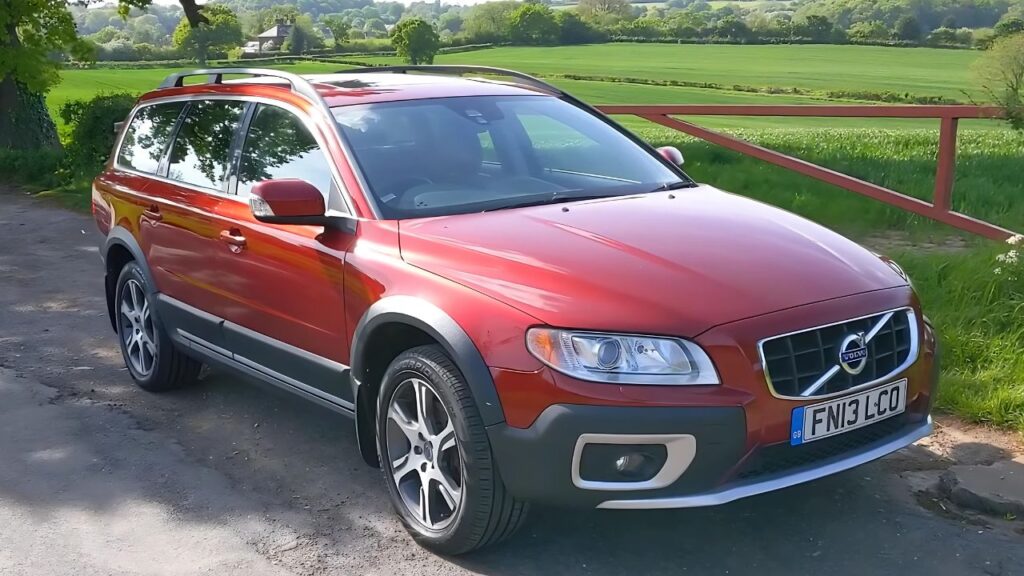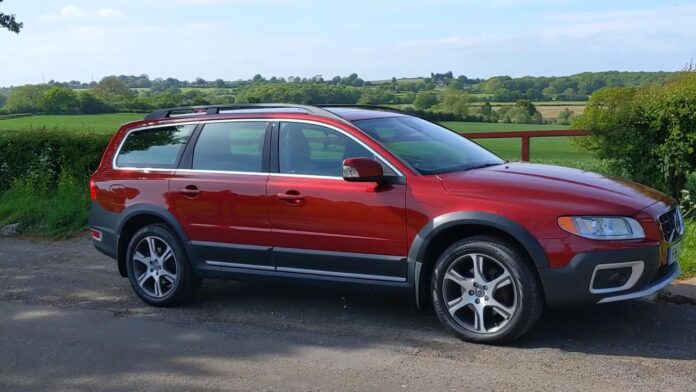The Volvo XC70 is often praised for its safety, durability, and versatile performance, making it a popular choice for those looking for a reliable and comfortable station wagon. However, not all XC70 models are created equal, and certain years stand out for having significant issues that can lead to costly repairs. If you are considering buying a used Volvo XC70, it’s important to be aware of the years that have had recurring problems, so you can make an informed decision.
Evolution of the Volvo XC70

The Volvo XC70 has undergone several updates and changes throughout its production run, which lasted from 1997 to 2016. The vehicle spanned three generations, each improving upon the previous model’s design, performance, and safety features.
- First Generation (1997-2000): The XC70’s origins trace back to the Volvo V70 XC. It offered the same luxury as the V70 but added all-wheel drive and increased ground clearance. It was Volvo’s attempt to blend station wagon practicality with some off-road capability, a concept that became more popular as SUVs gained traction during the late 1990s.
- Second Generation (2001-2007): The second-generation XC70 brought a more rugged exterior, larger dimensions, and increased performance, especially with the Turbocharged 2.5L 5-cylinder engine. This generation focused on enhancing its off-road appeal, although it remained firmly a luxury crossover designed for on-road comfort. Safety remained a top priority, with Volvo integrating more advanced features like Dynamic Stability Control and improving overall crash safety ratings.
- Third Generation (2008-2016): With the third generation, the XC70 received a significant overhaul. The design became sleeker and more modern, while Volvo increased the vehicle’s technology suite. The 2008 redesign introduced a more refined interior, with high-quality materials, and a wider range of infotainment options. The model continued to evolve mechanically, offering newer engines, including a turbocharged inline-6. The XC70’s off-road capabilities were also enhanced with features like Hill Descent Control, making it more appealing to drivers looking for a combination of luxury and rugged capability.
Worst Years for the Volvo XC70

- 2001 Volvo XC70
The 2001 model is one of the most troublesome in the XC70 lineup. Owners frequently report serious transmission issues, especially after hitting the 150,000-mile mark. The transmission tends to fail, leading to costly repairs that can sometimes exceed the value of the car itself. This year also saw problems with the power steering, which could malfunction, and some vehicles experienced stalls due to fuel pump issues. These problems combined make the 2001 model one to avoid if you’re looking for a dependable used vehicle. - 2003 Volvo XC70
The 2003 model is considered one of the worst XC70s in terms of reliability. Like the 2001 version, this model suffers from transmission failures, often occurring at around 108,000 miles. Owners have also complained about a loss of AWD power, where the torque delivery to the rear wheels gets cut off. Additionally, issues with the alternator and engine cooling system have been reported, as well as air conditioning failures. For these reasons, the 2003 model is best avoided due to its recurring and expensive-to-fix problems. - 2004 Volvo XC70
While the 2004 model had fewer transmission issues compared to the 2001 and 2003 models, it was plagued by other mechanical problems. The ABS control module often fails prematurely, which can significantly affect braking performance, especially in slick conditions. Other frequent complaints include engine oil leaks and worn-out control arm bushings, which lead to a rough and uncomfortable ride. The upper engine mount also tends to wear out faster than expected, resulting in excessive vibrations and engine noise. If you’re considering this model year, be prepared for potential repair costs. - 2008 Volvo XC70
The 2008 XC70 is part of the third generation, and while this model saw several improvements over earlier versions, it still had some notable issues. Most notably, the engine mounts wear out prematurely, leading to rough idling and aggressive gear changes. The fuel system has also been flagged, with many owners reporting leaks and fuel pump problems. Additionally, issues with the vehicle’s infotainment system (Bluetooth and radio) are frequent, as these systems can malfunction or disconnect unexpectedly. - 2015-2016 Volvo XC70
These models were some of the last in the XC70 series and had their fair share of reliability concerns. One of the most prominent problems in these years is with the steering, where drivers reported a sudden loss of power steering assistance, making the vehicle difficult to maneuver. These models also experienced issues with the radio reception, which was surprisingly poor for a luxury vehicle. While these problems may seem minor, they can be costly to repair.
Key Issues Across These Models
Across the worst years for the Volvo XC70, several common themes emerge, particularly around transmission failure and suspension components. Many of these issues can be costly to fix and may lead to unsafe driving conditions if not addressed. Here’s a breakdown of the most frequent complaints:
- Transmission Problems: Found mainly in the 2001, 2003, and 2004 models, transmission failure is one of the most severe and expensive problems reported. Many owners had to replace or rebuild their transmissions, which can cost several thousand dollars.
- Engine and Mounts: Premature failure of the engine mounts, especially in the 2008 and 2004 models, is a frequent problem. Worn-out mounts lead to excessive vibration and noise, making for an uncomfortable ride.
- ABS Module Failures: The ABS system, especially in the 2004 model, tends to fail earlier than expected. This can result in a loss of braking performance, particularly in wet or icy conditions, making the vehicle more dangerous to drive.
- Fuel System Issues: The 2008 model had numerous complaints regarding fuel pump leaks, which could pose a fire hazard if not addressed promptly.
Buying Tips and Final Thoughts
If you’re considering purchasing a used Volvo XC70, it’s essential to perform your due diligence to avoid models from problematic years. Some key tips when shopping for a used XC70 include:
- Service History: Look for a vehicle with a detailed and complete service history. Regular maintenance is crucial for preventing many of the issues, particularly with the transmission and engine mounts. A well-maintained car is likely to have fewer problems, even if it’s from a model year that is generally known to be problematic.
- Professional Inspection: Always have a trusted mechanic conduct a pre-purchase inspection, especially if the vehicle is from one of the years known for having major issues like 2001 or 2003. Focus specifically on the transmission, suspension components, engine mounts, and the ABS module, as these are the most frequently reported problem areas.
- Mileage Considerations: Many of the XC70’s issues, such as transmission failure, seem to occur after 100,000 miles. If you’re looking at a higher-mileage vehicle, it’s crucial to find out whether major repairs, such as transmission replacements, have already been performed.
- Check for Recalls: Recalls are relatively common for vehicles with significant mechanical problems. Make sure that any recalls on the model you’re considering have been addressed, as this can mitigate some of the risk.
Years to Consider
On the flip side, some model years of the XC70 have earned a reputation for reliability. If you still have your heart set on this vehicle, the following years have proven to be safer choices:
- 1999 and 2000: Early models of the XC70 are generally regarded as solid options. They feature the classic Volvo reliability, with fewer reported major mechanical issues compared to the troublesome years like 2001 and 2003.
- 2005 to 2014: Most of the third-generation models, particularly those from 2005 to 2014, are praised for their reliability and longevity. If properly maintained, these vehicles are known to last well beyond 200,000 miles. They are also less prone to the transmission and engine mount problems seen in earlier years.
- Post-2010: Starting in 2010, Volvo introduced several improvements to the XC70, including a more refined transmission and improved electronics. These changes helped mitigate many of the issues that plagued earlier models.
Conclusion
The Volvo XC70 has had a long and generally positive run, but there are certain years—2001, 2003, 2004, 2008, and 2015-2016—that have stood out for their mechanical failures and high repair costs. The primary issues across these models have been transmission failures, worn-out suspension components, and premature engine mount deterioration. If you’re looking for a reliable, long-lasting XC70, it’s best to focus on models from 2005 onward or early years like 1999 and 2000.
Always ensure the vehicle has a comprehensive maintenance history, and invest in a pre-purchase inspection to avoid costly repairs down the line. When cared for properly, many XC70s are capable of running for over 200,000 miles, providing a safe and comfortable ride throughout their lifespan.
By taking these steps and avoiding the worst model years, you can enjoy the benefits of Volvo’s legendary commitment to safety and performance without worrying about frequent, expensive repairs.

